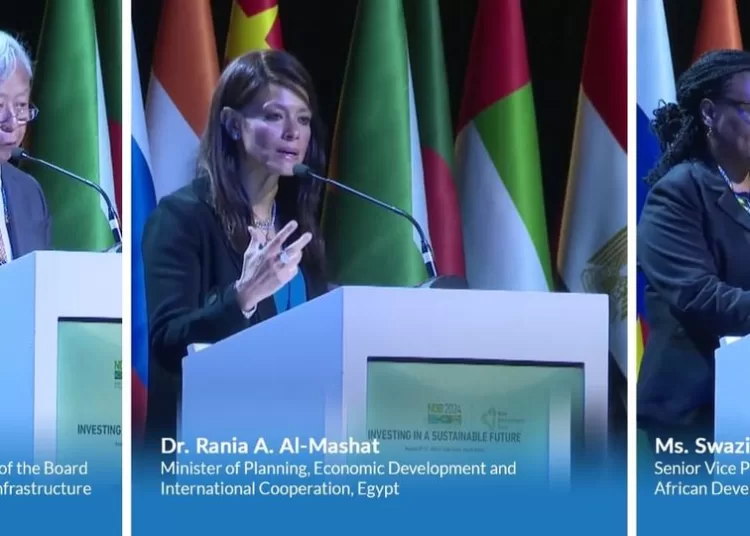CAPE TOWN – Egyptian Minister of Planning, Economic Development and International Cooperation and Egypt’s Governor at the New Development Bank (NDB) Rania al-Mashaat said Monday requirements for infrastructure projects resulted in rise in investment costs as infrastructure financing gap in Africa alone is estimated at about dlrs 100 billion and public resources are no longer sufficient, noting that the African region In sub-Saharan Africa infrastructure financing needs reached 7 per cent of Gross domestic product (GDP), a percentage that is higher in other regions.
During her participation in a discussion panel entitled “Development Finance institutions at the forefront of infrastructure investments” within the activities of the annual meetings of the NDB, affiliated with the BRICS group in South Africa, with the participation of Jin Liqun, Chairman of the Board of Directors of the Asian Infrastructure Investment Bank (AIIB), the minister explained the importance of the annual meetings of the NDB, held in South Africa, along with the development model implemented in this regard, noting that all drives attest to the great diversity of development models applied by the bank’s member states and is also reflected in the NDB dealings with multiple parties, with the aim of financing various projects.
Mashat said the scale of infrastructure needs in emerging markets and developing countries is enormous and requires trillions of dollars annually to meet these needs, to implement projects in various fields such as water, sanitation, renewable energy, transportation, as well as other domains.
The session was moderated by Han Bin, Director of the Private Sector at the NDB.
According to the World Bank (WB), low- and middle-income countries need trillions of dollars to bridge these gaps, including middle income traps situation and we must not forget the technological gap as well, taking into account the WB’s reports indicating that the inability of middle- and low-income countries to catch up with technological progress leads to widening development financing gaps and limits their ability to achieve desired progress, she said.
Mashat also emphasised the importance of making optimal use of BRICS and its new development bank, referred to as the BRICS Development Bank, in enhancing the flow of investments, to meet aspirations of the peoples of different countries, highlighting the importance of co-operation and integration between multilateral development bank.
For his part, the AIIB’s president said investments in sustainable infrastructure are essential to achieving inclusive and resilient growth and meeting global climate goals, noting that in light of the growing gap in infrastructure financing, development finance institutions are required to re-assess their approach to scaling up infrastructure financing in developing economies promptly, with the aim of providing quick finance and mobilize technical and financial resources necessary to implement projects efficiently.
Meantime, he also touched upon the importance of cooperation between multilateral development banks, through joint financing, and the need to reduce transaction costs.






Discussion about this post